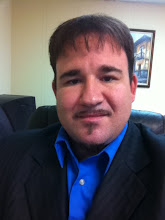MIAMI – Sept. 19, 2008 – An AARP study released Thursday challenges the perception that older Americans have been left out of the current real estate crisis because they have built enough home equity to avoid delinquencies and foreclosure.
Research by AARP's Public Policy Institute showed that 684,000 homeowners age 50 and over were either in foreclosure or delinquent on mortgage payments in the last six months of 2007. Homeowners age 50 and over represented about 28 percent of all delinquencies and foreclosures.
Of the 684,000 homeowners, about 50,000 were in foreclosure or already lost their homes, the study showed.
The vast majority of homeowners 50-and-over, however, are keeping up with their mortgage payments. The foreclosure rate among older Americans in the sample was 0.24 percent at the end of 2007. That's was half the rate for those younger than 50, who tend to have even less equity than their older counterparts, the study showed.
"Older Americans depend on their homes both for shelter and as a retirement asset," said Susan Reinhard, senior vice president of the Public Policy Institute. "Losing a home jeopardizes long-term financial security, with limited time to recover."
The study also reflects the effect that the subprime mortgage market meltdown had on homeowners 50 or over. Older Americans with subprime mortgages were nearly 17 times more likely to be in foreclosure than those who had prime loans, the study showed.
The states with high foreclosure rates for older Americans include California, Colorado, Florida, Nevada and Michigan.
Many older Americans have tapped into their home equity for things such as home repairs and sending their children to college. Now, some seniors with fixed incomes are having trouble meeting payments amid a slow economy and the high cost of fuel, food and health care. And, falling home values have lowered home equity for all age groups.
Daniel Alpert, managing director at the investment bank Westwood Capital, said homeowners young and old who tapped their equity when the housing market was running hot and homes were being overvalued earlier this decade may now be facing the consequences.
"People had this perception that they were flush," Alpert said. "Here you have this massive amount of debt that was actually being spent on stuff, and now there's no access to that money."
Reinhard said that many older homeowners, like their younger counterparts, entered into loans that were too costly, sometimes at the behest of an aggressive mortgage broker. Also, mortgage terms and the forms that accompany them can be hard to understand, Reinhard said.
"The mortgage environment is very complicated," Reinhard said. "We need more simplified mortgage contract language that people can understand."
For the study, AARP purchased data from Experian, a large U.S. credit bureau. The data is taken from a random sample of 2.5 million people, 1 million of which are 50 or over. The numbers are different from other data, such as the Mortgage Bankers Association's, due to reporting and collection procedures.
The study showed that African-Americans and Hispanics 50 or over were disproportionately affected by the mortgage crisis when compared to whites.
African-Americans who are 50 or over hold nearly 7 percent of first mortgages in their age group, but they represent more than 14 percent of foreclosures in their age group. Hispanics age 50 or over hold more than 7 percent of mortgages in their age group but represent nearly 16 percent of foreclosures in their age group, the study showed.
African-American and Hispanic borrowers age 50 or over both have a foreclosure rate of 0.51 percent, compared to 0.19 percent for Caucasians, the study showed.
"They were the targets of most of the predatory lenders," Alpert said.
Cadence Fishing CS10 Spinning Reel Review
7 years ago










No comments:
Post a Comment